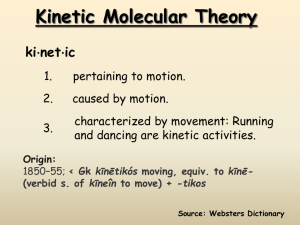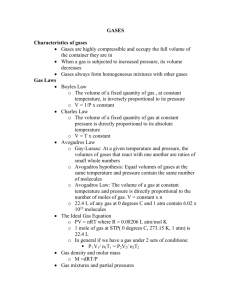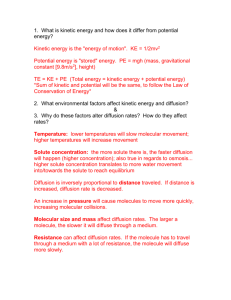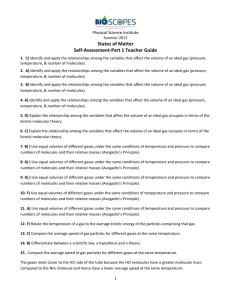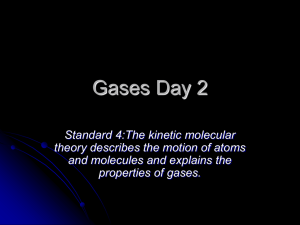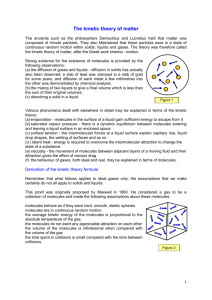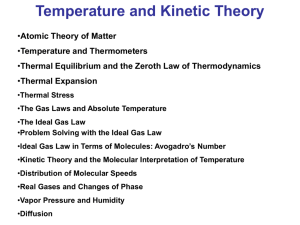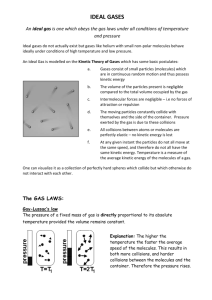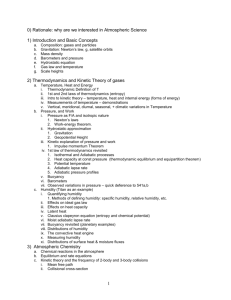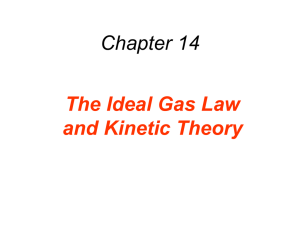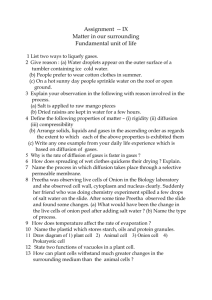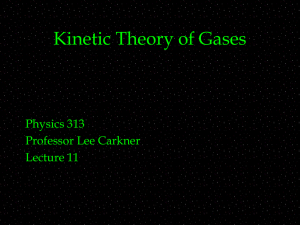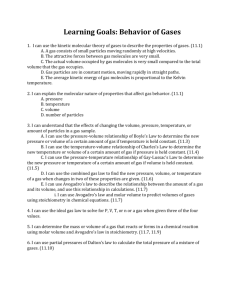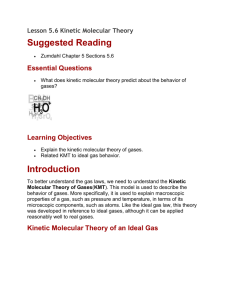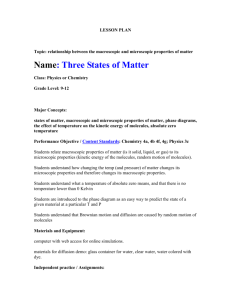Kinetic Theory equation - gas laws
advertisement
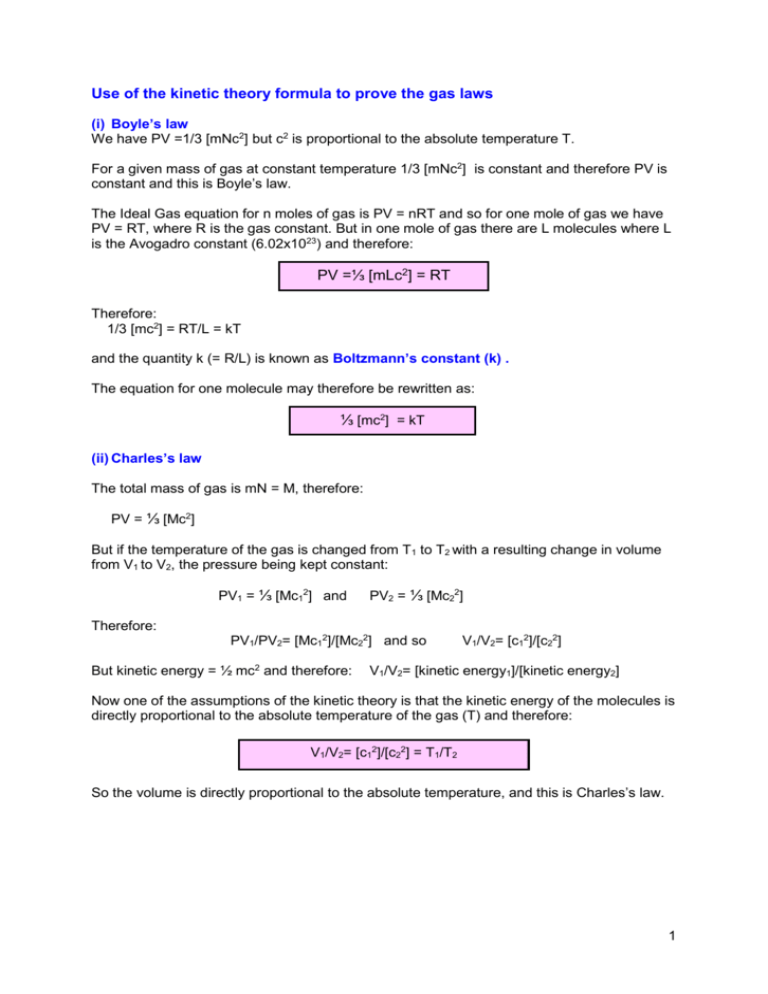
Use of the kinetic theory formula to prove the gas laws (i) Boyle’s law We have PV =1/3 [mNc2] but c2 is proportional to the absolute temperature T. For a given mass of gas at constant temperature 1/3 [mNc2] is constant and therefore PV is constant and this is Boyle’s law. The Ideal Gas equation for n moles of gas is PV = nRT and so for one mole of gas we have PV = RT, where R is the gas constant. But in one mole of gas there are L molecules where L is the Avogadro constant (6.02x1023) and therefore: PV =⅓ [mLc2] = RT Therefore: 1/3 [mc2] = RT/L = kT and the quantity k (= R/L) is known as Boltzmann’s constant (k) . The equation for one molecule may therefore be rewritten as: ⅓ [mc2] = kT (ii) Charles’s law The total mass of gas is mN = M, therefore: PV = ⅓ [Mc2] But if the temperature of the gas is changed from T1 to T2 with a resulting change in volume from V1 to V2, the pressure being kept constant: PV1 = ⅓ [Mc12] and PV2 = ⅓ [Mc22] Therefore: PV1/PV2= [Mc12]/[Mc22] and so But kinetic energy = ½ mc2 and therefore: V1/V2= [c12]/[c22] V1/V2= [kinetic energy1]/[kinetic energy2] Now one of the assumptions of the kinetic theory is that the kinetic energy of the molecules is directly proportional to the absolute temperature of the gas (T) and therefore: V1/V2= [c12]/[c22] = T1/T2 So the volume is directly proportional to the absolute temperature, and this is Charles’s law. 1 (iii) Avogadro's law Maxwell showed that the average kinetic energies of molecules are equal at the same temperature, that is: ½ [m1c12] = kT = ½ [m2c22] and so [m1c12] = [m2c22] But P1V1 = 1/3 [m1N1c12] and P2V2 = 1/3 [m2N2c22] Now if P1 = P2 and V1 = V2, [m1N1c12] = [m2N2c22] and therefore: N1 = N2 and this is Avogadro’s law (equal volumes of all gases at the same temperature and pressure contain equal numbers of molecules). (iv) Dalton’s law of partial pressures For a mixture of gases: PV = 1/3 ([m1N1c12] + 1/3 [m2N2c22] + …………) P = 1/3 ([m1N1c12]/V + 1/3 [m2N2c22]/V + …………) = P1 + P2 + ….. where P1, P2 ... are the partial pressures of the gases, and this is Dalton’s law (the sum of the partial pressures of all the gases occupying a given volume is equal to the total pressure). P = = P1 + P2 + ….. (v) Graham’s law of diffusion The rate of diffusion of a gas is directly proportional to the mean velocity of the gas molecules, and this is also proportional to √c2. Rate of diffusion of gas A/Rate of diffusion of gas = uA/uB = √[cA2/cB2] = √[B/A] This is Graham’s law (the rate of diffusion of a gas varies inversely as the square root of the density of the gas). The difference in mass and hence in the diffusion rates of the two isotopes of uranium ( 238U and 238U) is used in the nuclear industry to separate them, although the differences are small, and so a series of diffusion processes have to be used to obtain sufficient purity. Student investigation The following investigation is designed to study the absorption of sound in different gases. Set up a horizontal tube 5 cm in diameter and 3 m long (a piece of water pipe is suitable) with a loudspeaker directed into one end. (a) Using a signal generator, investigate the propagation of sound of frequency 8000 Hz in the tube when it is filled first with air and then with carbon dioxide. (b) Reduce the frequency to 2000 Hz and repeat the experiment. Suggest possible reasons for what you observe. 2
